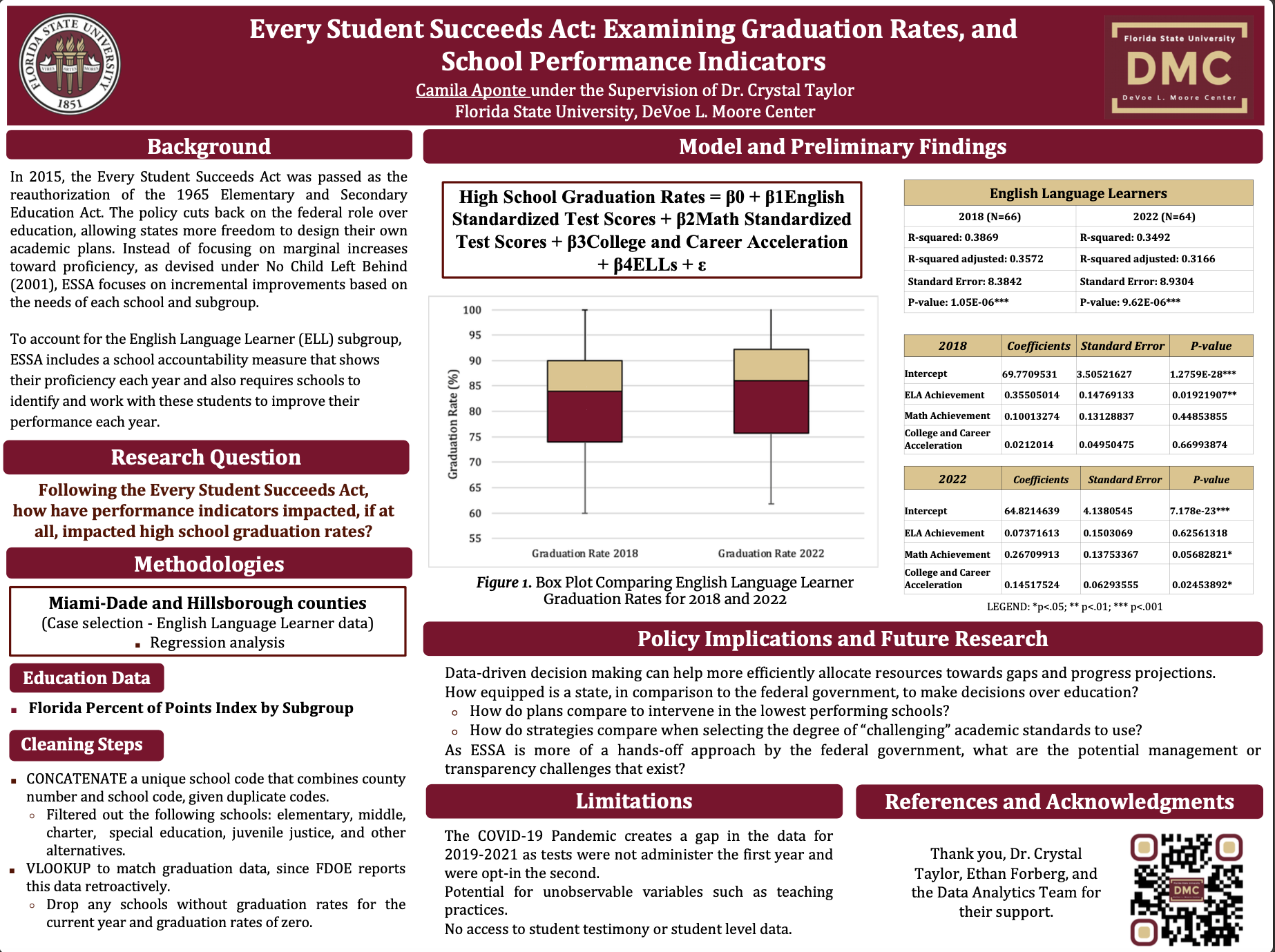Research Symposium
24th annual Undergraduate Research Symposium, April 3, 2024
Camila Aponte Poster Session 1: 9:30 am - 10:30 am /133

BIO
Camila is a Senior, interning as a policy researcher for FSU's DeVoe L. Moore Center. In her free time, she likes to read and play the piano. She aspires to work as a political journalist for a national newspaper, or as a policy analyst for the Department of Education.
Every Student Succeeds Act: Examining Graduation Rates, and School Performance Indicators
Authors: Camila Aponte, Crystal TaylorStudent Major: Political Science and International Affairs
Mentor: Crystal Taylor
Mentor's Department: Devoe L. Moore Center Mentor's College: College of Social Science & Public Policy Co-Presenters:
Abstract
The Florida TaxWatch indicates that Florida appropriates over 20% of its budget towards K-12 education, ranking fifth in the country. Following the federal standards of No Child Left Behind, the passage of the 2015 Every Student Succeeds Act empowered states to create their own educational plans. Following these acts, the Florida Department of Education indicated that graduation rates increased by about 28%. Therefore, this research asks: ”How do performance indicators under the Every Student Succeeds Act impact, if at all, high school graduation rates across Florida?” This research employs a regression and chi-square analysis using Florida Department of Education data of over 500 high schools from 2017-2018 to 2021-2022 academic years. The dataset contains spending per pupil, and performance indicator data from subgroups such as graduation rates and Mathematics and English achievement scores. Descriptive statistics reveal that graduation rates should increase related to spending per pupil. Scholars from universities in Michigan find that additional spending of about $700 per pupil can improve graduation rates by a percentage. This analysis determines whether this relationship holds. This research has the following policy implications. First, the Every Student Succeeds Act’s timely response to the needs of students and schools shows whether effective adjustment can be adopted to close educational gaps. Second, evaluation of the Every Student Succeeds Act can show if state control has more effective outcomes for students than federal standards. Future research should examine using or overusing metrics such as test scores to inform educational policies.
Keywords: Public Policy, Education, Educational Policy, High School, Policy


